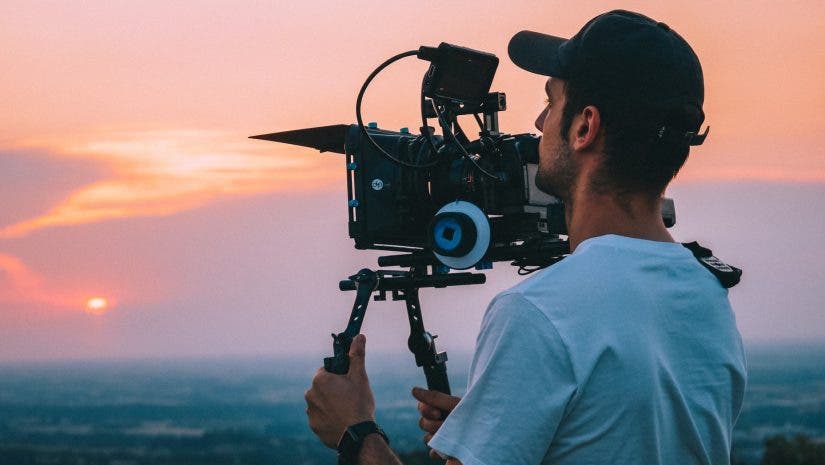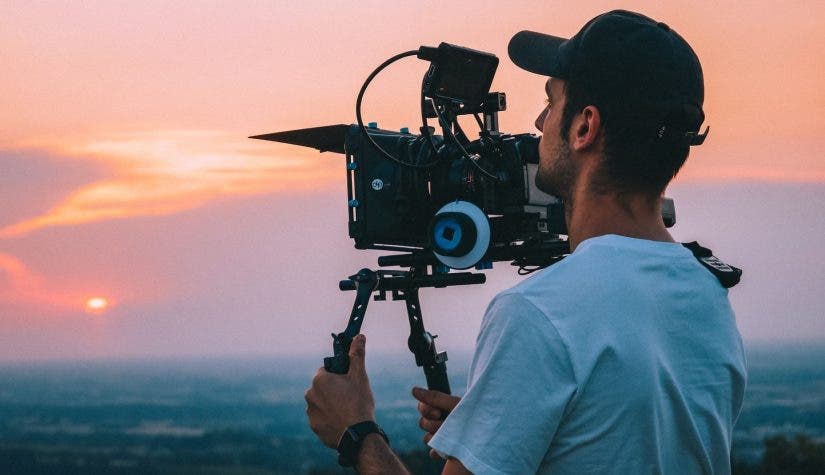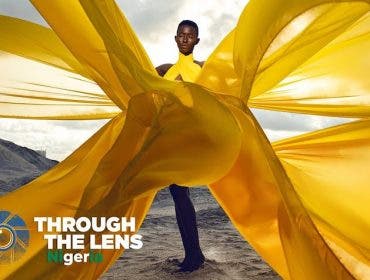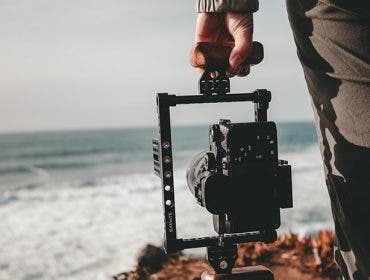Good filmmakers use a collection of angles and different types of shots for effective storytelling and visual interest. Learning these angles will help you quickly communicate your vision to camera operators and crew members in storyboarding.
What is a camera shot?
Before we begin though, let’s define what a camera shot is. Shots are the building blocks of your movie. Each camera shot builds to another to form a scene. Each scene builds to an act, and each act builds to form your story and make your movie what it is. A camera shot can convey information, emotion, mystery, suspense, love, disgust, wonder, or any emotion you need the shot to accomplish. Once you understand how to use the different framing, camera angles, camera movement, and how you can combine them, you will be well on your way to composing beautiful shots.
Whether you’re new to filmmaking or just looking for a new perspective, here are some of the most common and useful camera angles to add to your shot list.

Angled Types of Camera Shots
In these shots, the camera operator places the camera strategically in relation to the subject. Here are a few of the most common angle shots to know.
- Eye-level shot: The camera stands in for a person in the scene and films from the subject’s eye level.
- High-angle shot: To provide a sense of weakness or inferiority, film the subject from above.
- Low-angle shot: To provide a sense of power or superiority, film the subject from below.
- Hip-level shot: Film the subject from waist or hip level to draw focus to that area of the subject’s body.
- Knee-level shot: Use a low camera angle to focus on the subject’s legs in movement.
- Ground-level shot: The camera is on the ground and focuses on the subject’s feet and low surroundings.
- Over-the-shoulder shot: Used for character dialogue and interactions, the camera films a subject from over the shoulder of another character.
- Over-the-hip shot: Used when one character is sitting while the other is standing, this shot connects the two characters and implies power imbalance.
- Bird’s-eye view: Film the subject from directly above, looking downward for context of surroundings.
- POV shot or point-of-view shot: The camera stands in for the subject so the audience can view the world from their perspective.
- Dutch-angle shot: The camera itself is angled to create a sense of movement or disorientation.
Distance-Based Types of Camera Shots
These camera angles all feature different methods of framing a subject based on distance between the subject and the camera operator. Distance-based camera shots can also feature some of the angle types discussed above. These are relatively straightforward to understand and practice.
- Aerial shot: This shot is from far above the scene or subject and involves the use of a helicopter, drone, or crane.
- Long shot or wide-angle shot: The camera is far from the subject and uses a wide-angle lens to depict a wide scene and capture the subject’s full body.
- Extreme long shot: This shot creates a sense of scale by filling the frame with the environment while featuring a very distant subject who looks small by comparison.
- Full shot: The subject is fully in view and takes up most of the frame.
- Medium shot: The subject is in view from the waist up while the rest of the frame is filled by the surroundings.
- Medium-wide shot: A bit wider than the medium shot, this framing shows the subject from the knees up.
- Cowboy shot: Commonly used in westerns and action movies, this shot shows the subject from the mid-thighs up.
- Medium close up: The head and shoulders of the subject are framed with a fair amount of the background visible. This framing is great for dialogue.
- Close-up shot: The subject’s face fills most of the frame.
- Extreme close-up shot: A portion of the subject’s face, like the mouth or eyes, fills the frame.
Camera Movement Based Shots
Shots that feature camera movement provide a sense of progress and action for your story. There are many ways to use camera movement effectively, but these are some of the most common methods.
- Camera-pan shot and camera-tilt shot: The camera moves on a horizontal axis or a vertical axis to capture motion, or to establish the surroundings.
- Dolly shot: The camera operator moves the camera along a track, either away from or toward the subject.
- Tracking shot: The camera follows the movement and action of the subject using a gimbal or dolly.
- Zoom shot: The camera itself doesn’t move, but motion is created by zooming in or out from a subject.

Camera shot framing: How to choose the best types of shots for each moment
When you are trying to decide which framing to use there are several questions you can ask yourself to help you decide. Are you trying to give or hide information? As an example, if you want to let the viewer know that a character is struggling up a mountain, you would likely want a wide shot to give you a sense of scale. If you then want to show that he has been injured and is limping up that mountain you might want to use a high angle medium shot showing him struggling up the mountain and still have enough detail to tell he is hurt.
Another consideration when choosing framing is emotion. Let’s say you have two people in a conversation, we’ll call them Jack and Diane. Jack is lying about where he’s been. Diane doesn’t pick up on it at first, but slowly puts the pieces together. You might want to start with an over-the-shoulder of Jack looking towards Diane. Jack is speaking, but his face is obscured hinting to the audience something is off. The next shot could be a two-shot to show them both, but now we see Jack’s body language. Diane eventually notices and we get a medium closeup of her looking questioningly at him. He fidgets and we get a closeup of him rubbing his thumbs together. This is building the tension.
The main thing about framing is to ask yourself what you want to convey with each shot and how it adds to the scene, story, and characters. It is all about learning the language of filmmaking. When you get enough experience, you will learn to combine information through the artful connection and combination of framing to tell your story appropriately and effectively.

How to make a shot list
So once you start to think about which shots you want for your scenes it is time to make the extremely important shot list. This is the map of your camera framing and movement and helps you pre-visualize how you should break down your day. Which shots are the hardest to set up and accomplish? Which shots can be combined so you have to reset the lighting as little as possible? The shot list becomes your shooting schedule and helps keep other departments informed about the flow of the day.
So what goes on a shot list? Every shot you need to make, without leaving any out. You can then later decide to cut or combine shots. More specifically, you want to list which camera you are using, which angle, what frame size, if the camera is moving or static, and if the camera is on some form of support such as a dolly, jib, crane, etc.
Below is an overview list of things you should add for every shot.
- Description: What is happening in the shot?
- Shot number: the reference number assigned to each individual shot.
- Scene and shot number: the reference from the script breakdown; i.e. Scene 5a, shot 3
- Lens: What focal length you are you using?
- Shot size: How big is the subject in the frame.
- Movement: Is the camera dollying, on a gimbal, or any other movement including simple pan and tilts?
- Type of shot: How are you framing the shot? Is it a low angle? Is it a dutch angle?
- Frame rate: Is there any slow motion or fast motion?
- Sound: Is there sound in the shot?
- Useful notes: Anything that could be useful that may have not been covered above.
Bringing It All Together
As you plan your next project, refer back to this list to create compelling footage that will engage the viewer through variety. With a bit of practice, you’ll be well on your way to making your vision a reality.






